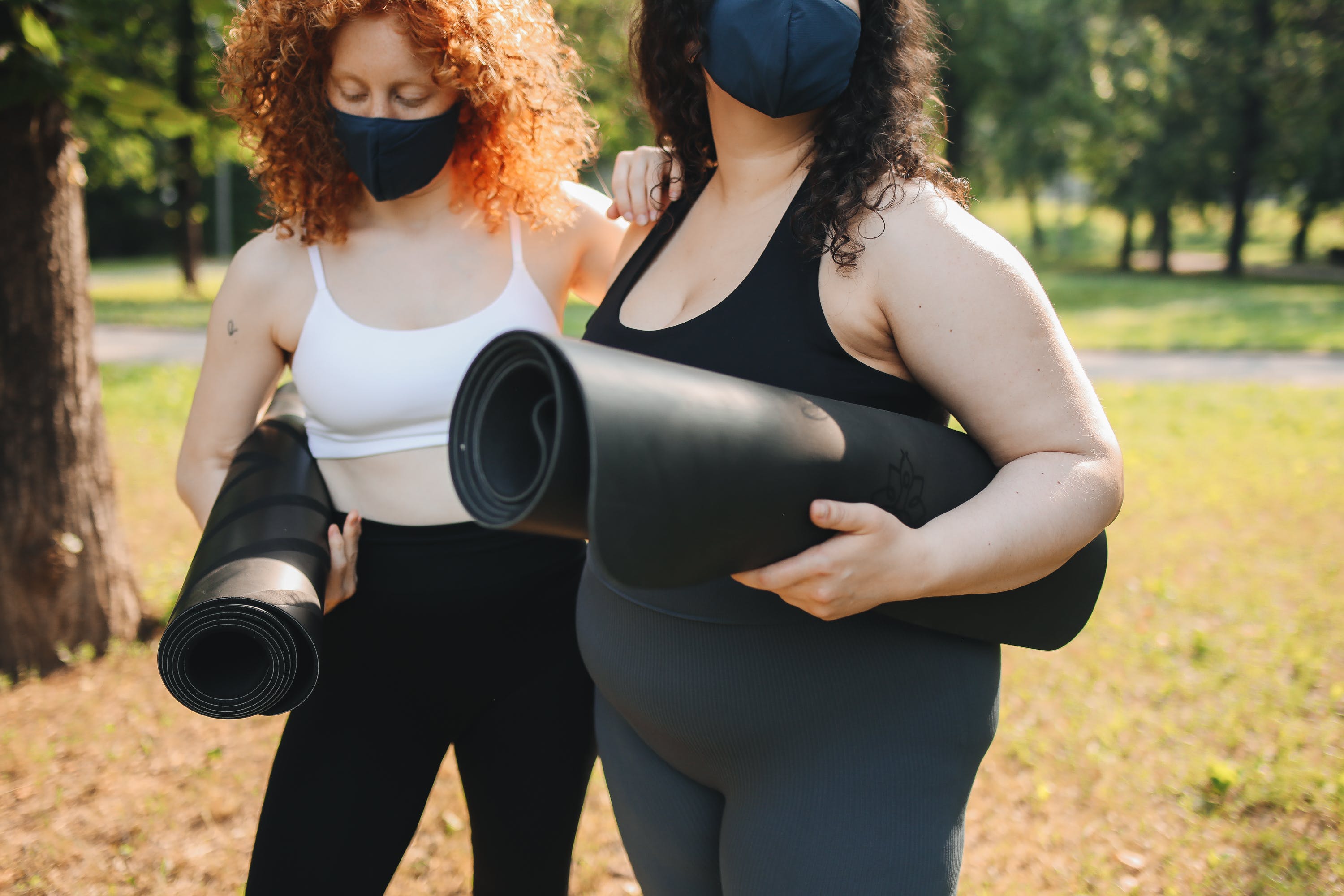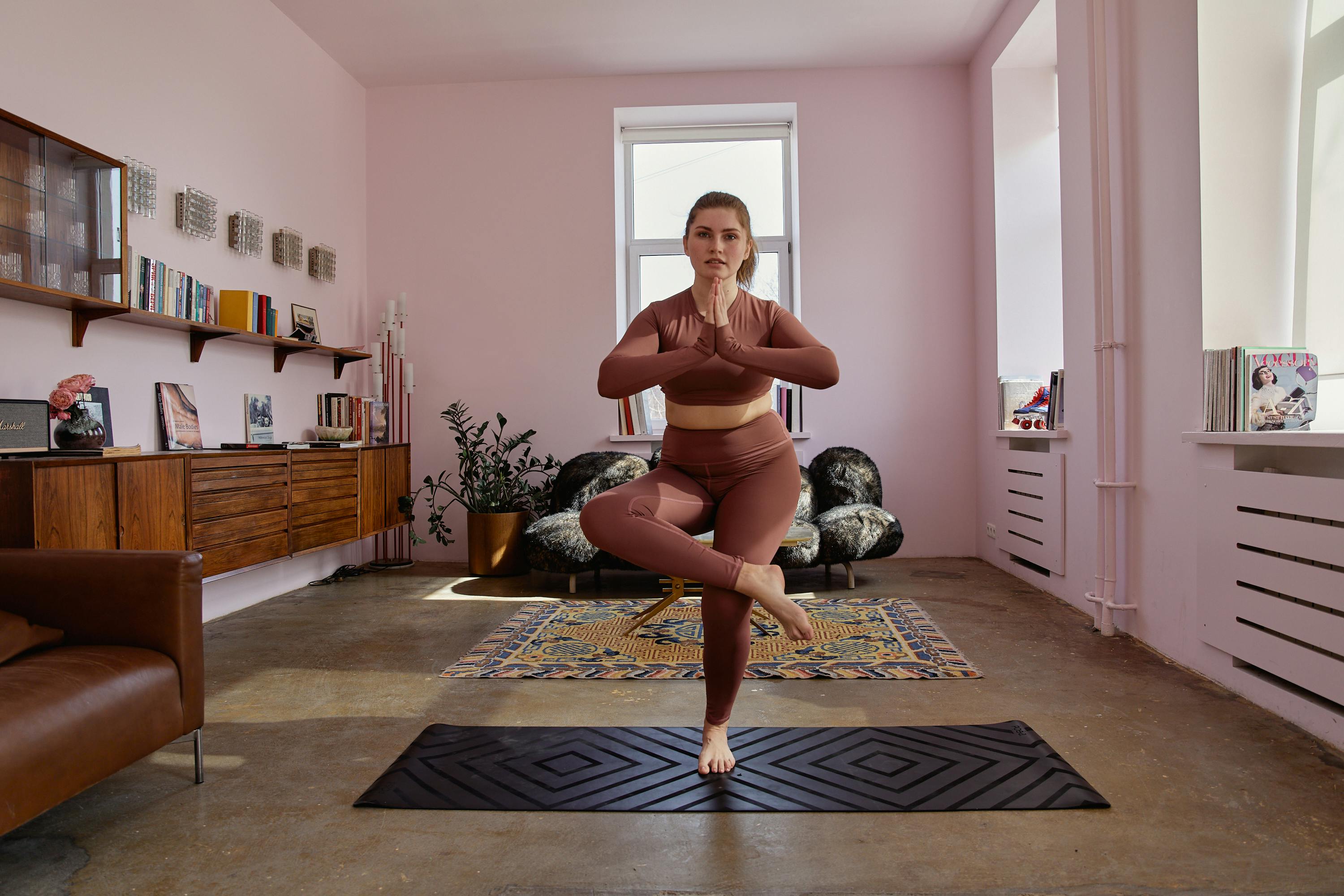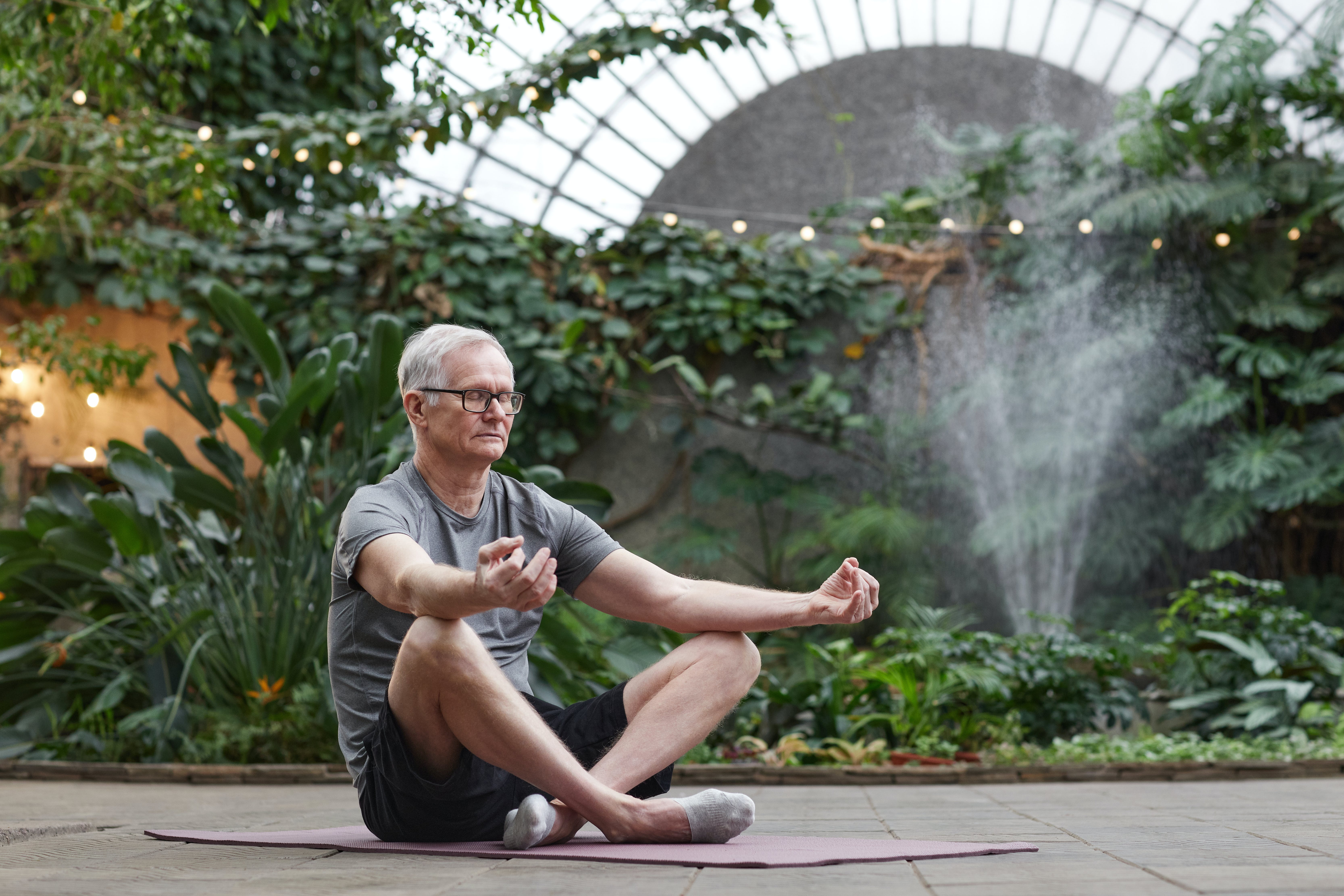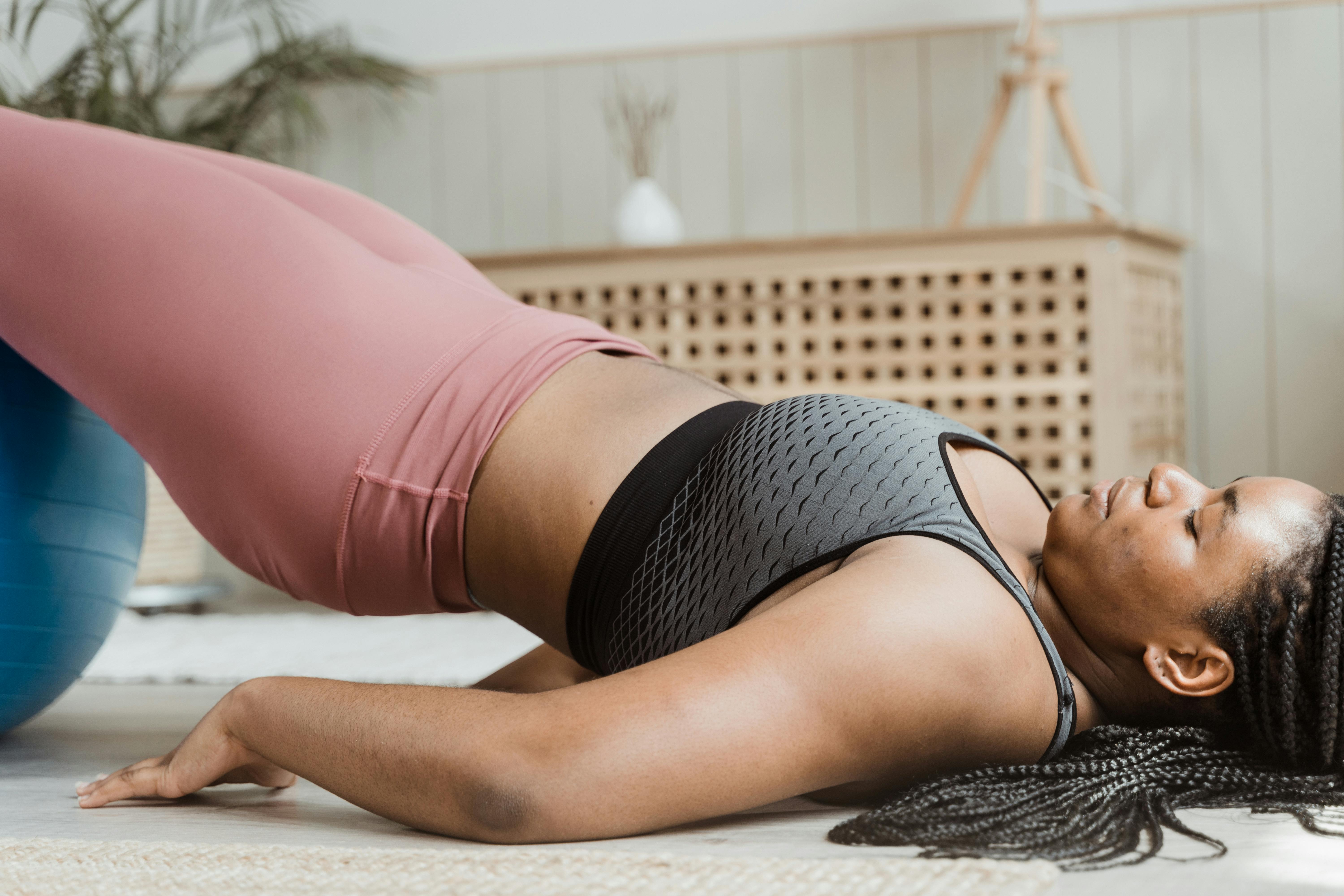Maintaining a positive body image regardless of size, shape, skin tone, and physical abilities is extremely challenging in today’s social environment that’s increasingly virtual.
Unfortunately, this challenge becomes even more difficult once we zoom in on the yoga community, where certain stereotypes and misconceptions have taken root.
But yoga, this beautiful practice that many of us have come to love, is so much more than just the poses we do on our mats. Born in India at least 2,500 years ago, it was never about having the "perfect" body or mastering the most difficult pose.
Yoga was, and still is, a spiritual dance of the mind, body, and soul. A dance where everybody is welcome.
So, what changed throughout the years?
Let’s peel back the layers to understand what has caused these misconceptions in yoga culture. By understanding the true essence of yoga, we can work towards overcoming the obstacles in creating a more inclusive and authentic yoga community.

The Evolution of Yoga in the West
Let's take a brief stroll down memory lane.
Around 2,500 years ago, during the time of the Buddha, sage Patanjali wrote theYoga Sutras of Patanjali. This classical yoga text, which became the most translated text of ancient India, laid the foundation for a systematic version of yoga and made the practice accessible to regular people.
It's fascinating to think that this archaic text, composed between 500 BCE and 400 CE, became the earliest organized representation of yoga the way we know it today. However, yoga's popularity in India dwindled for a while, until it finally made a comeback in the late 19th century, thanks to Indian philosophers like Swami Vivekananda.
Vivekananda is also the one who brought yoga to the West. One of his most notable books is Raja Yoga, where Swami gave his interpretation of the Yoga Sutras of Patanjali. This book is the beginning of hatha yoga and the modern asana practice.
“Yoga is the journey of the self, through the self, to the self.” — The Bhagavad Gita, verse 6.20
However, what’s important to know is that Patanjali’s teachings about yoga hardly make any mention of physical postures. Instead, they focus on meditation, ethical disciplines, and the path to enlightenment.
Yoga's Portrayal in Ancient Texts vs. Modern Media
“You must remember that freedom of the soul is the goal of all Yogas, and each one equally leads to the same result.” — The Complete Works of Swami Vivekananda, Volume I
Yet, today’s narrative has taken quite a twist! Modern media, with its glossy magazine covers and Instagram feeds, often showcases yoga as a domain for the slim, flexible, and predominantly fair-skinned.
This portrayal, while fetching a lot of likes and shares, is in stark contrast to yoga's inclusive roots. The yoga that Swami Vivekananda brought to the West had nothing to do with physical appearance or the so-called 'beach body' doing a handstand on a sun-kissed shore.
Yoga has always been about the inner journey, the breath, and the connection to oneself and the universe.

The Rise of the "Ideal Yoga Body" Stereotype
I believe that the commercialization of yoga has, in many ways, diluted its essence. Brands, in their bid to sell more products, often perpetuate a narrow image of what a yogi should look like. This not only alienates a significant portion of potential practitioners but also creates a skewed perception of success in yoga.
In other words, here is where I see the rise of the “ideal yoga body” stereotype. In an attempt to maximize profits from yoga and turn it into a lucrative business venture, some gurus, teachers, instructors, and influencers have made the practice more shallow and seemingly unattainable.
So, there’s been a shift in focus from inner peace to picture-perfect poses.
However, it's not all gloom and doom in the age of filters. Many in the yoga community are pushing back against these stereotypes and advocating for a more inclusive representation. By understanding the contrast between ancient teachings and modern portrayals, we can begin to reclaim yoga's true essence so that it’s accessible to everyone, irrespective of their physical appearance.
The Modern Push for Body Positivity in Yoga
It seems like the winds of change are blowing through the yoga community, and it's about time.
Yes, the commercialization of yoga has often skewed its representation, but it wouldn’t be fair if I didn’t acknowledge the efforts made against this narrative. A growing number of yogis, brands, and studios are challenging these unhealthy stereotypes and celebrating the diversity of yoga bodies.
For instance, there are influencers who are breaking the mold. They're not just flexing in their perfect poses; they're sharing the raw, unfiltered journey of yoga. From the sweat and struggles to the moments of pure bliss, they're showing that yoga doesn’t discriminate, and neither should we.
And then there are the brands. Remember when yoga wear seemed to cater to just one body type?
While this sentiment is still somewhat present, there have been a lot of changes in recent years. Brands are making campaigns that feature yogis of different shapes, sizes, and colors. Not only is this the ethically right thing to do, but it’s also a good business practice!
Finally, let’s not forget yoga studios. More and more of them are offering classes that cater to everyone, making sure that no one feels left out. From workshops that emphasize self-love to events that celebrate every body type, the yoga community is slowly but surely moving towards inclusivity. There’s also an increase in the types of yoga being taught, including yoga for different ages and yoga for different body types.
All these efforts are a nod to what yoga truly stands for—self-acceptance, inner peace, and a connection to nature and our present environment.

The Role of the Yoga Community in Fostering Inclusivity
Sure, things are moving in the right direction. But we can certainly do more to speed up this process and make yoga more accessible to everyone. So, the question that we should all ask ourselves is: how can the yoga community ensure that everyone feels seen, heard, and valued?
Firstly, let’s talk about representation. While it’s often said, “don’t judge a book by its cover,” we have to acknowledge that the cover is important. People who are not part of the yoga community will always make judgments about the practice based on what they see and hear about it. So, if we want to build an inclusive practice where everyone is welcome, we must update our “cover.” By celebrating yogis with different body types, we're sending a powerful message: yoga is for everyone. And by everyone, we mean everyone – whether you're tall, short, curvy, skinny, young, old, or anywhere in between.
Next, yoga studios and teachers need to step up. Being a yoga instructor goes beyond just teaching the poses. Our responsibility includes creating a safe and welcoming environment. This means being aware of the potential insecurities and struggles of students and actively working to dismantle them. It also means making sure each class can accommodate people of all shapes and sizes.
Lastly, let's not forget the power of community. By encouraging open conversations, sharing stories, and actively listening, we can create a space where everyone feels like they belong. After all, isn't that what yoga is all about?
You’ll be surprised how much impact even the smallest gestures can have.
The Impact of Body-Positive Yoga on Mental Wellbeing
I’m well aware that many people are still questioning the impact that social media campaigns have on our body image. So, to better understand the importance of body positivity within the yoga community, let’s break down the actual, tangible benefits of body-positive yoga.
Back in 2018, the University of Minnesota decided to investigate the relationship between yoga and body image. They gathered a group of 46 yoga enthusiasts and observed how their body image changes as time passes.
The results? The study found that yoga boosted body image in several ways. Participants witnessed physical changes, felt a surge of gratitude for their bodies, and experienced a sense of accomplishment in their practice. Plus, seeing different types of bodies practicing yoga made them feel more self-confident and good about themselves.
The study also highlighted the power that yoga instructors hold. By ensuring their classes are a melting pot of different body types, they can amplify the positive vibes and minimize the not-so-great ones, the ones that create an atmosphere of discrimination and exclusivity.
In addition to this, the 15-year Project EAT study discovered that yoga can be a game-changer, especially for young adults who've been feeling a bit insecure about their bodies.

Areas for Improvement
It becomes clear that yoga can be a positive catalyst for change in how we perceive ourselves and others. But, like any age-old practice trying to find its footing in the modern world, there are still some kinks to iron out.
Here's a closer look at the areas that can be improved and how each and every one of us can help:
- Diverse Representation in Marketing Campaigns and Branding: While we've seen a surge in body-positive yoga influencers, mainstream marketing still often showcases a narrow ideal. Brands need to diversify their campaigns, featuring yogis of all sizes, ages, ethnicities, and abilities. This not only reflects the true essence of yoga but also makes the practice more inviting for everyone.
- Inclusive Class Structures: Not every pose is accessible to every body type. Instructors should be trained to offer modifications and alternatives, ensuring that everyone, regardless of their physical abilities, feels included and can benefit from the practice.
- Feedback Opportunities: Studios and online platforms should actively seek feedback from their community. This can highlight areas of improvement and foster an environment that remains inclusive and welcoming.
- Support for Mental Wellbeing: Yoga can boost mental health, but it's not a replacement for therapy or medical treatment. Studios should be clear about this distinction and consider partnering up with mental health professionals to offer comprehensive support.
The Path Towards a More Inclusive Yoga Community
“Yoga is not about self-improvement, it’s about self-acceptance.” ― Gurmukh Kaur Khalsa
Yoga is unity; it unites our mind and body; it unites physical, mental, and spiritual practices to improve our wellbeing. It’s also the art and craft of healthy living. However, what it is not is a competition and a tool to boast about one’s physical appearance and abilities.
Somewhere along the way, as yoga became commercialized and globalized, it drifted from its core values. Now, it’s up to us to resist the superficial temptations to use yoga as a trophy. Instead, we should continue to work on returning to the roots of yoga and embracing its true spirit. That way, we can create a community that celebrates every individual, irrespective of their body type, age, or background.
And while marketing campaigns and inclusive classes are part of the solution, we should aim toward a collective shift in our mindset.
Every yogi, instructor, brand, and enthusiast has a role to play in this transformation. By actively promoting body positivity, challenging stereotypes, and creating more inclusive spaces, we can ensure that yoga remains a sanctuary for all.



Comments
Existing Comments